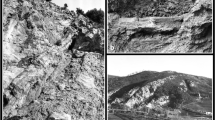Abstract
Unidentified bones were donated to the Buchenwald Memorial Museum in Weimar, Germany. The donor thought the bones may have belonged to internees of the concentration camp and had been decoratively carved by camp personnel. Non-destructive forensic anthropological examination was carried out on the bones to identify their possible origin. Comparative human and non-human bones samples were used to determine the provenance of the bones and the anatomical region they may have come from. Literature and internet searches were conducted to trace the origin of the carved motifs on the bones. The bones were determined to belong to the lower limb region of bovids. The carvings were found to correspond with those of existing bone examples found in some museums in the UK. They were traced to German prisoners of war dating to the First World War. An in-depth examination of the donated bones revealed their non-human provenance. It further showed that no link existed between the bones, internees of the concentration camp, and the time of the camp’s existence. It was discovered that they belonged to the period 1914–1918 and form an important part of German prisoner of war history in the UK.



Similar content being viewed by others
References
https://www.buchenwald.de/en/625/. Accessed 16 Feb 2018.
Stein H. Lampenschirme aus Menschenhaut? In: Nachgefragt – Historiker Antworten. Buchenwald Memorial – Buchenwald and Mittelbau-Dora Memorials Foundation, https://www.buchenwald.de/en/1132/. Accessed 16 Feb 2018.
https://ww1.salford.gov.uk/artefacts/. Accessed 16 Feb 2018.
http://bid.igavelauctions.com/Bidding.taf?_function=detail&Auction_uid1=1868476. Accessed 16 Feb 2018.
Rinaldi, J. The Lloyd Collection of Napoleonic Prisoner of War Artifacts. First American Edition: Kennebunkport Maritime Museum; 1986.
https://www.museum.ie/The-Collections/Documentation-Discoveries/January-2015/Irish-Republican-POW-Bone-Carvings. Accessed 16 Feb 2018.
http://beyondthetrenches.co.uk/civilian-internment-on-the-isle-of-man/. Accessed 16 Feb 2018.
http://www.bbc.co.uk/ahistoryoftheworld/objects/Z4Nm5D1wTXuXkCg96WSnIA. Accessed 16 Feb 2018.
http://www.kingsownmuseum.com/fwwcarvedbones.htm. Accessed 16 Feb 2018.
Acknowledgements
I would like to thank Holm Kirsten, Curator of the Museological Collection Buchenwald; Lar Joye, former Curator of Military History at the National Museum of Ireland (now Port Heritage Director at the Dublin Port Company), and Brenda Malone, Collections Manager and Historian at the National Museum of Ireland. Also thanks to the anonymous reviewers for the quick review of this article.
Author information
Authors and Affiliations
Corresponding author
Ethics declarations
Conflict of interest
The author is director of Human Remains Services Ireland (HRSI) and carried out the examination as part of his paid work as a consultant forensic anthropologist.
Rights and permissions
About this article
Cite this article
Gapert, R. Surprising origin of two carved bones donated to the Buchenwald Memorial Museum. Forensic Sci Med Pathol 14, 416–418 (2018). https://doi.org/10.1007/s12024-018-9968-8
Accepted:
Published:
Issue Date:
DOI: https://doi.org/10.1007/s12024-018-9968-8




